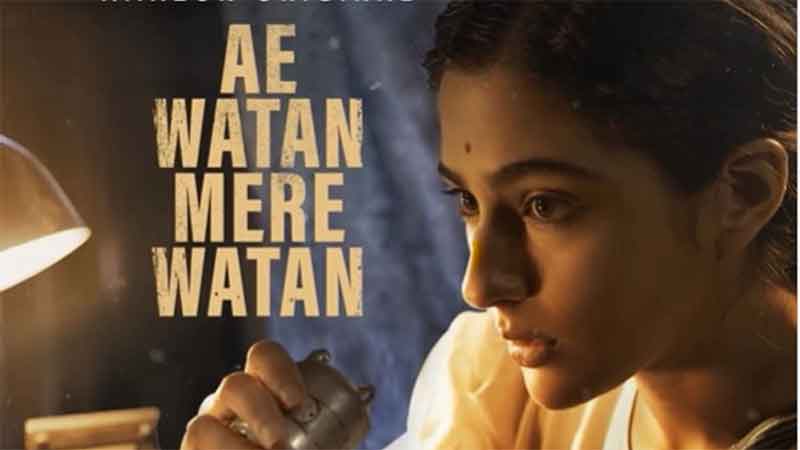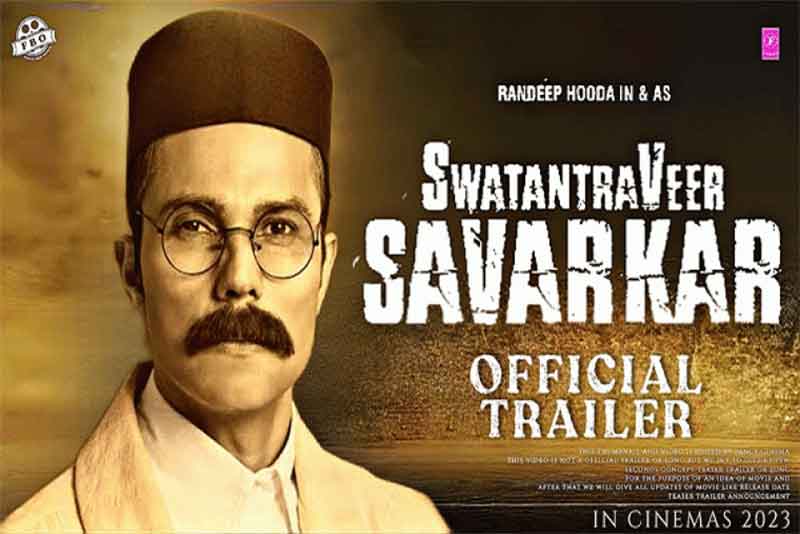
In the modern era no actress has gone into the skin of a character in such magnitude of depth or given as much justice to a role as Shabana Azmi.,who turned 70 last year. She may not have embezzled the beauty of an Aishwarya Rai or Madhuri Dixit ,of the liveliness or joie de vivre of Kajol or Sridevi.However none of them matched the versatility artistry or finesse of Shabana which traversed dynamic regions.Azmi was simply the manifestation of the soul of inner beauty as few Hindi film artists
Shabana Azmi’s expressions were simply poetic and as natural as the fluttering of a flower ,possessing the grace of a sun setting. Few artists ever modulated their movements so rhythmically or could convey their feelings with sheer movement of eyes and hands.Shabana blended the creativity and craft of a sculptor with the skill of an architect or surgeon. No actress equalled her in art films or able to infuse such a degree of sensitivity or realism into roles.
Shabana portrayed social themes at a scale only Smita Patil was comparable with in her time. Even if Smita was more intense and rebellious to me it was Azmi who was more of the manifestation of a woman suffering and displayed more malleabality.In the very same movie her expressions could be as diverse as the colours of rainbow. Shabana could superbly blend grief, anger, joy and despair and the audience relished her subtle element of mischief and innocence.
I hardly have an adjective to do justice to the sheer flow in her acting which resembled river water. Shabana when enacting the role of an enslaved rural woman wishing to liberate herself from being entrapped, had no substitute. At best her acting was a manifesto of meditation and as realistic as the mountains, forests and rivers. Few Hindi film artists had more shades of genius.
With the barest emotions she could reflect intensity of lightning breaking out. In the last few decades no Hindi film actress has taken art to such magical heights .almost giving it anew dimension. There was a spiritual essence to her art, traversing regions that were surreal..Shabana performed a huge spectrum of roles like few artists ever. Few Hindi film actresses took grace to such heavenly proportions, championing silence or purity like none else.
Unlike Smita Patil she was far more submissive in her roles as an oppressed woman but still gave the plot its optimum life. No actress integrated so clinically with Naseeruddin Shah simply bring the best out of his co-star.Shabana Azmi pairing with Naseerudin Shah took acting prowess to classical scales rarely traversed. She also worked together in many a film with Smita Patil,forming close to the best ever pair in Hindi film history. It is strange and surprising that she hardly co-starred with the other great character artist of her time that was the late Sanjeev Kumar.
BEST FILMS OF SHABANA AZMI
In order of merit my best films of Shabana Azmi in terms of acting performance are ‘Arth,’ ‘Fire,’ ‘Ankur,’ ‘ Sparsh’ and ‘Masoom.’.
In Ankur(1974) Shabana delivered a masterpiece blending every element be it grace, intensity, sensitivity or simplicity. I doubt any actress could have symbolized the bondage or tormentation of a lower caste woman in being entrapped by a landlord Her onscreen chemistry with Nag took artistry in Hindi films to regions rarely traversed.Shabana brilliantly adjusts her acting in accordance to the stages of the films., infusing life even when she is grievously hurt. Her role played an important part in weaving a plot which illustrated the essence of feudalism.
In Nishant (1975) although understated enacting character of Sushila who is school teacher Girish Karnad’s wife she gives a most effective and convincing performance , becoming the scourge in the eyes of Naseeruddin Shah as Vishwam who forcibly captures her.Vishwam (Naseeruddin Shah) is the youngest brother of the powerful and influential village Zamindar (Amrish Puri). The Zamindar will not hesitate to do anything for the welfare and protection of his family, which also includes bending the law to his own advantage.
In Shatranj Ke Khiladi (1977)Azmi plays the sophisticated and subtle woman who is also steady in her approach to make her disinterested husband realise her desires.
.In Sparsh (1980) enacting Kavita, a woman in depression after a failed marriage she perfectly weaves into plot with co-star Naseerudin shah enacting blind principal Anirudh Parmar in a school for blind children. In perfect harmony she enacts a contrasting nature to her co-star when drilling her students and most artistically plays role in crystallization of love relationship, with great detachment and touching sensitivity. Her artistic acting contributes greatly in portraying the ebb and flow in the relationship with Anirudh Parmar and with subtle sensitivity they mend the bridge of conflict.
In Arth (1982) she took art to sublime realms when enacting a woman who was a victim of failed marriage .With brilliant balance she portrayed the ups and downs of a human relationship. There was no element of overacting or hysteria and yet her eyes conveyed the intensity of an inferno.Few acting performances have ever portrayed humiliation combined with such grace or emotional pain in such a subtle manner. With great vulnerability and heart touching courage she relentlessly defys any bid by her husband for divorce .
In Mandi(1983)she most craftily portrays role of a manager of a prostitute agency, giving a perfect illustration of the desire of women to free themselves from shackles of bondage by men.Shabana superbly portrays crudeness and self seeking attitude in defying a police force .
In Albert Pinto ko Gussa Kyo Aata Hai(1980)her supporting role infuses life to the theme of the film .Above all her acting could make audience think for themselves ,rather than just get swayed away.
In Masoom (1983) most poignantly displays reluctance to accept her husband’s true son at first and finally in manner touching the very core of your soul pleads him to come back like a 360 degree transformation in her feelings.S habana reveals sensitivity in sublime proportions. Rarely seen a more dramatic turnaround of forgiveness and acceptance in a family theme. One of the finest projections of complexities in family life.Indu (Shabana Azmi) and DK (Naseeruddin Shah) have a happy marriage and two daughters — Pinky and Minni — and live in Delhi. The tranquility of their life is interrupted when DK receives word that he has a son, the result of an affair with Bhavana (Supriya Pathak) during his 1973 visit to Nainital when his wife Indu was about to give birth to their first child Pinky (Urmila Matondkar). Bhavana did not tell DK about their son as she did not want to disturb DK’s matrimonial life. Now that she has died, her guardian Masterji sends word to DK informing him that his son, Rahul (Jugal Hansraj), who is nine years old, needs a home. Despite the objections of Indu, who is devastated to learn of her husband’s infidelity, DK brings the boy to stay with them in Delhi. Rahul is never told that DK is his father as he bonds with DK and his daughters. But Indu can’t bear to look at him, a tangible reminder of DK’s betrayal.
DK, worried by the effect Rahul is having on his family, decides to put him in a boarding school in St. Joseph’s College, Nainital; Rahul accepts with reluctance. After gaining admission at the school and returning to Delhi before his permanent move to Nainital, Rahul figures out that DK is his father and runs away from home. After he is escorted home by a police officer, Rahul confesses his awareness of the identity of his father to Indu. Indu is unable to bear his heartbreak and intercepts Rahul before he is put on the train to Nainital, thereby accepting him into the family and wholeheartedly forgiving DK, after which they drive home happily.
In Khandaar(1984) she expresses classical subtlety in art of rare kind .superbly blending detachment with sensitivity. In loneliness she displays divinic grace. Three friends from the city visit some ruins where an aged mother (Gita Sen) and her daughter Jamini (Shabana Azmi) live. Mother awaits the arrival of a distant cousin to marry Jamini, but the man is already married and living in Calcutta. The photographer Subhash (Naseeruddin Shah) takes pity on the family and pretends to be the awaited suitor. They keep up the charade for the duration of the trio’s visit, Subhash quietly becoming attracted to Jamini even as he understands the fate awaiting her. When the friends leave, Jamini stays behind, facing a life of loneliness in the ruins.
In Paar(1984) acting in tandem with Naseerudin Shah she most illustratively conveys the emotions of a lower caste woman bonded by feudalism ,as though she was the character in real life. In that movie her expressions were as natural and penetrating as the gushing water of an ocean .Above all she championed a theme of liberation or victory. The film of exploitation in rural Bihar, in which a landlord (Utpal Dutt)’s men wreck a village and kill the benevolent schoolmaster (Anil Chatterjee) who was a progressive force in the village. The labourer Naurangia (Naseeruddin Shah) breaks with a tradition to passive resistance and retaliates by killing the landlord’s brother. Naurangia and his wife Rama (Shabana Azmi) become fugitives from justice. After many efforts to find sustenance elsewhere, the two decide to return home. To earn the fare, they agree to drive the herd of pigs through the river, causing the pregnant Rama to believe she has lost her baby. But they have to swim across a wide, swiftly flowing river, in which they nearly drown before reaching safety. At the end of the film Naurangia puts his ear to her belly and listens to the heartbeats of the unborn baby.
In Fire (1996) with artistic fervour she projects a lesbian relationship and the circumstances that shape it.Shabana touched social reality at its very doorstep, challenging conventional norms. Rarely ever in a Hindi does film has such a sensitive portrayal of a relationship between 2 women been portrayed. Hardly an adjective to do justice to the depth of emotions which resembled the turbulence of Ocean water.Radha and Sita are two sisters-in-law who live in the same house, in New Delhi, in a conservative Indian family. Stifled by the family, the two women will find happiness and freedom thanks to the love that grows between them. The title alludes to both the passion that ignites between the protagonists and sati, the now illegal ritual by which Indian widows used to be burned along with their husband’s corpse.
In Godmother (1999)Enacting character of Santokben Jadeja Shabana exudes intensity of fire blazing in a furnace ,illustrating the sheer ruthlessness of the mafia and its designs. Godmother is a 1999 Hindi biographical drama film directed by Vinay Shukla released in 1999, and ostensibly inspired by the life of Santokben Jadeja, who ran the Mafia operations of Porbandar, Gujarat, in the late 1980s and early 1990s and later turned politician
EVALUATION
Shabana Azmi was a crusader in defying Hindu saffron communalism and earlier oppression of slum dwellers. I can’t forget her conviction in valiantly challenging demolition of slum sin the 1980s and being a vocal opponent of the construction of Ram Janmabhoomi temple and demolition of Babri Masjid .Shabana also vociferously condemned opression on woman ,raising s mantle of feminism more than any actress of her time. She did not simply sell herself as brand or to the lure of commercialism like many stars. Today Shabana is a vocal critique of suppression of dissent. Pertinent that her values were shaped by her father, the famous Communist poet, Kaifi Azmi.
Still I am critical that as an activist she did not penetrate the major problems of the day at the very heart and to an extent succumbed to lure of parliamentarianism as a Rajya Sabha member. Shabana did not critically raise her voice against operation Greenhunt like Arundhati Roy or against the opression of dalit castes and activists in Bhima Koregaon-Elgar Parishad incident. Her support was virtually negligible in the recent farmer’s movement against agricultural bills or earlier in condemning arrest of ‘urban maoists’ .A radical inclination is missing in her political agenda.
On the cultural front She has not galvanised artists into establishing a pro-people cultural forum exposing the tryanny of globalization and saffron communalism, nor made any noticeable contribution in commemoration of centenary of the Russian revolution, 50 years of Naxalbari and Bi-centenary of Karl Marx.
It is the failure of the democratic forces to be able to win Shabana over to utilise her talents to the optimum. There has also been a tendency in her to project herself as a crusader of the oppressed, instead of doing so on the very ground. I feel even if she is a strong critique she has not played an effective role on the cultural front in confronting neo-fascism at it’s very root. In essence she has remained an apologist of the social order. Shabana has hardly raised her voice against the essence of reactionary character of the Hindi film industry and in her own way has exuded shades of arrogance. I firmly adhere to the fact that however brilliant she was an an actress, she did not do adequate justice to case of social liberation, often also endorsing reactionary roles. Unlike Smita Patil,she hardly portrayed the role of a crusader against injustice ,like in ‘Manthan’ or ‘Mirch Masala.’
Nevertheless she has proved that high class art still survives or exists in days when crass commercialism is looming at a crescendo. Shabana is without doubt a model for any genuine progressive artist .I would bracket her amongst the top 5 Indian actresses of all time, even if she could not carry classics like a Waheeda Rehman, Nargis or Nutan. Personally, I rate Shabana just a touch above Smita Patil, being more expressive or artistic in the all-round sense. We must salute Shabana for playing a pioneering role in art or parallel cinema.
Harsh Thakor is a freelance journalist.Toured India,particularly Punjab .Written on Mass movements ,,Massline,Maoism on blogs like Democracy and Class Struggle and frontierweekly .An avid cricket lover too who has posted writings on blogs like Pakpassion Indian Cricket Fans and Sulekha.com
GET COUNTERCURRENTS DAILY NEWSLETTER STRAIGHT TO YOUR INBOX















































